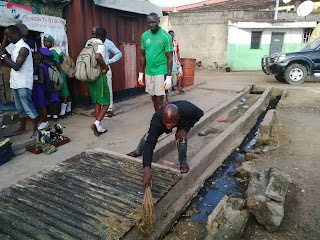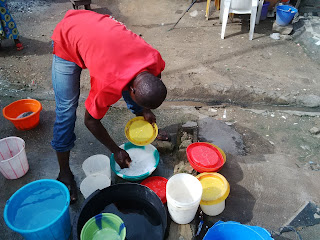Keeping local poultry sound and anticipating endemic contaminations
Read Also: Most Dangerous Cat Diseases
Local poultry can be influenced by an assortment of infections and parasites, some of which are endemic to certain sorts of winged animal. You should present and keep up a strict cleanliness system
to keep sicknesses out of poultry. And additionally doing stringent cleanliness and biosecurity measures, you should do inoculation or medicine methodologies to avert and/or control certain endemic sicknesses.
The two most genuine maladies that you should keep out of poultry runs are Newcastle sickness and avian flu (winged creature influenza). Other poultry maladies incorporate interminable respiratory infection, fowl cholera, Salmonella, Campylobacter and inner parasites. Salmonella and Campylobacter, while exceptionally infectious in poultry, are not as a matter of course life-debilitating for fowl. These sicknesses can however bring about genuine disease in people on the off chance that they get into the natural way of life.
Day by day investigation of poultry via prepared staff, in great lighting conditions, and autonomously of any programmed observation gear, is the best strategy to forestall genuine episodes of infection. Examinations will empower you to identify early indications of infection just by taking note of changes in the conduct and state of individual hens.
The early indications of sick wellbeing may incorporate changes in sustenance and water consumption, in trimming, in "prattle" and in movement. There may likewise be a drop in egg creation and changes in egg quality, for example, shell deformities.
Notwithstanding your own day by day, or more regular, investigations and those of your own veterinarian, enrollment in the Poultry Health Scheme requires that a compulsory yearly assessment and specially appointed reviews be done by Animal Health and Veterinary Laboratories Agency (AHVLA) overseers.
Read Also: Main 10 Most Serious Pet Diseases
For more data on keeping up great poultry wellbeing year-round, see the aide on poultry welfare on the homestead and to guarantee that poultry achieves market in the best condition, see the aide on poultry welfare off the ranch.
Salmonella
Salmonella is a kind of bacterium that can bring about sickness in creatures and individuals. It is a standout amongst the most huge reasons for sustenance harming in people after Campylobacter. Individuals and creatures may turn out to be sick on the off chance that they eat sustenance containing the microscopic organisms or handle contaminated creatures. The disease might be mellow or it can be exceptionally extreme. A few creatures and individuals are tainted without being sick by any stretch of the imagination. They are known as "bearers" can in any case spread the malady to others.
Tainted creatures may deliver meat, drain or eggs containing Salmonella. The microscopic organisms may spread to clean sustenance if polluted produce is not took care of hygienically but rather legitimate cooking slaughters Salmonella.
Salmonella is available in the defecation of contaminated individuals and creatures. Excrement from tainted animals can debase water. The ordinary treatment of drinking water supplies evacuates the microorganisms. Vegetable products may convey Salmonella if untreated water is utilized for watering system.
The microscopic organisms live in the entrails of a wide range of sorts of creatures and in addition in individuals. Ranch creatures, pets, stallions, winged creatures and reptiles, for example, tortoises would all be able to be contaminated. Disease may spread between individuals, and additionally from creatures to individuals.
National Control Programs (NCPs) for the decrease of Salmonella spread homestead creature species which display a potential danger of transmitting Salmonella and other zoonotic specialists to people. These are right now confined to poultry - ie rearing rushes of gallus, laying hens, grills and turkeys.
With respect to poultry, the NCPs influence you in the event that you deliver creature nourish, take part in essential creature generation and/or handle and get ready sustenance of creature birthplace in the accompanying ways:
- set the recurrence and rate for taking examples from herds
- favor research centers to which you are allowed to send tests for examination
- set out control measures if a zoonoses of general wellbeing essentialness is recognized
- give normal appraisals of examining results
- require that you enlist as a poultry administrator
- recommend the records you should continue ranch
Fowl cholera
Fowl cholera is an infectious sickness of feathered creatures. It is brought on by a bacterium called Pasteurella multocida and it happens around the world. The ailment can murder numerous flying creatures when it first enters a helpless group. Recouped feathered creatures may get to be transporters of the bacterium and keep on contaminating nature.
More seasoned chickens might be more extremely influenced than youthful ones and turkeys have a tendency to be more vulnerable to contamination than chickens. Clinical signs present may incorporate loss of hunger, bluntness, the runs and shortness of breath. Winged animals tainted for a more extended period may have swollen joints.
Parasitic contaminations and different infections
Amusement feathered creatures, which are raised in pens before discharge, have a tendency to be defenseless to parasitic diseases, including Hexamitiasis and Trichomoniasis.
A typical parasite of noteworthy wellbeing and welfare concern is the Red Mite which especially influences laying hens and can bring about critical creation misfortune, and downsizing of eggs.
Other important conditions are Coccidiosis, Marek's ailment, irresistible bursal ailment (Gumboro illness), irresistible bronchitis and faltering.
Lead harming and introduction can likewise influence poultry. See the page in this aide on shielding poultry from lead harming on homesteads for further points of interest.
Read Also: Bringing Meat Chickens up in Small or Backyard Flocks
Zoonoses - contaminations went from creatures to people
Ranch creatures can convey a scope of infections, some of which can be passed onto people. These infections are known as 'zoonoses'. Transmission may come about because of direct contact with an infected creature, debased manure or pee, or through utilization of sullied homestead produce.
Zoonotic contaminations are observed in England and Wales through courses of action for both human and creature wellbeing. One of the key perspectives is the necessity to enlist all poultry premises with 50 or more flying creatures of blended species. For more data, see the aide on poultry: a diagram.
There are around 40 distinct zoonoses in the UK and some of these are named notifiable.
E-coli
Present in an extensive variety of creatures, from poultry to steers, the E-coli microscopic organisms can get by for a long time in dung or soil. Sickness taking after contamination might be serious and even deadly, with manifestations including the runs and kidney disappointment. Disease is created by eating debased sustenance or contact with dung. Great individual cleanliness is key in avoidance of the ailment.
Chlamydophila psittaci
Chlamydophila psittaci disease is thought to be basic in various feathered creature species. It is most normal in psittacines, for example, budgerigars or cockatoos, additionally in different species including turkeys, ducks and geese. Disease has likewise been recorded in individuals working in pet shops and poultry preparing plants.
The psittacosis disease is perceived around the world. Clinical indications of the illness may just happen when flying creatures are under anxiety, for instance after transport. They incorporate loss of craving, bluntness, worked breathing, weight reduction and the runs.
Minimizing wellbeing dangers on your ranch
To decrease the danger to your own particular wellbeing and that of any laborers or guests, you ought to take various insurances. These are highlighted in the pertinent HSE data sheet.
The small scale life forms that bring about zoonoses are liable to COSHH. This places various commitments on bosses and the independently employed to deal with the danger, presentation and control by, for instance:
minimizing the danger of contamination by keeping stock solid, and immunizing where fitting
guaranteeing great individual cleanliness by washing before eating, drinking or smoking
wearing overalls when taking care of creatures, particularly on the off chance that they are debilitated, and gloves and a waterproof cover if taking care of results of birth or waste and sewage
washing and covering all cuts and touches
Basic zoonoses incorporate Salmonella and Campylobacter (which bring about sustenance harming), E-coli (which bring about brutal looseness of the bowels) and ringworm (a contagious skin contamination). Nourishment harming can by and large be maintained a strategic distance from by guaranteeing sustenance is arranged and cooked legitimately, and great cleanliness will forestall numerous different sorts of zoonoses. Perused about Salmonella and Campylobacter on the page in this aide on keeping poultry solid and avoiding endemic contaminations.
Notifiable maladies: avian flu
Avian flu (AI) is a notifiable malady.
Great cultivating practices are fundamental to decrease the danger of ailment or ailment and to avert them spreading amid a flare-up. You ought to dependably be watchful and screen your stock nearly for any early cautioning signs. For exhortation on ailment anticipation applicable to all types of creatures, see the aide on ailment counteractive action.
The AI infection
There are numerous strains of AI, which differ in their capacity to bring about sickness.
AI infections are arranged into two sorts as indicated by their capacity to bring about extreme malady in types of winged animals:
exceedingly pathogenic avian flu (HPAI)
low pathogenic avian flu (LPAI)
LPAI does not generally bring about clear sickness in flying creatures and is thought to circle unreservedly inside the worldwide wildfowl populace.
Some strains of HPAI spread effectively and immediately between winged animals in poultry populaces and cause serious sickness, with a high demise rate. AI is spread by development of tainted flying creatures or contact with respiratory emissions and, specifically, excrement, either straightforwardly or through debased articles, garments or vehicles.
Manifestations of HPAI
The impacts of HPAI are more recognizable with signs and side effects that include:
- high death rates in groups
- respiratory pain
- a swollen head
- bluntness
- loss of ravenousness
- drop in egg creation





No comments:
Write comments